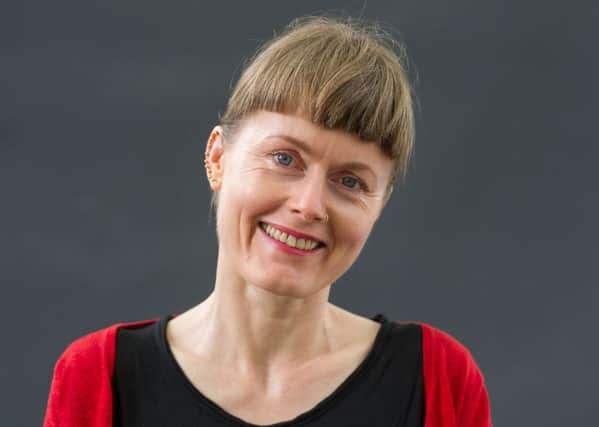Book review: H(A)PPY, by Nicola Barker


She is Mira A, who is one of “The Young”. Thanks to “The System”, which has purged “The Information Stream”, the Young can say, “We are Innocent. We are Clean and Unencumbered.” As Mira A informs the reader early on, “We are in Balance. We work (but never struggle) to stay in Balance. And everything functions perfectly.” Mira A is “principally a musician. This is my talent. But I do not focus exclusively on music. Nothing is exclusive here. To be exclusive is to exclude. And nothing is excluded.” There is more than a hint on Tennyson’s The Lotos-Eaters in this synthetic paradise where languorous contentment has become mandatory.
Music will be a problem for Mira A. But the first thing the reader will notice – and this must be the mostly beautifully designed book I have read since Mark Z Danielewki’s House Of Leaves – is that the text is polychromatic. On the first page, for example, the words “Plagues”, “History” and “The Past” are in red, “Death Cults”, “corrupted” and “Manacles” in purple, “God” and “filth” in blue: later sections will feature darker reds and greens. Further into the book, the text resembles an artwork more than a novel, with arcane hieroglyphs etched into mantra-repeated sentences; words hovering alone on an otherwise blank page and significant changes in typography: sinuous Latinate carving, screeching 8-bit computer pixels, parts designed to look like old-fashioned typewriter lettering.
Advertisement
Hide AdThe reader can fairly swiftly deduce the reason for the multiple colours. It is a kind of traffic light system crossed with a trigger warning. When Mira A says things that might be considered dangerous or radical, the very words shine a minatory hue, a phenomenon variously referred to as “pinkening” or “purpling” depending on the extremity. It is therefore ironic that it is not language, but music, that causes her initial “EOE”or “Excess of Emotion”. (The novel begins by recommending the reader play the Complete Historical Guitar Recordings of Agustín Barrios alongside the book. It truly is a bold challenge to make the codex form as multimedia as the internet).
Mira A has heard a piece of guitar music; she also becomes obsessed with the kora, a kind of West African lute. What intrigues her is, as she says in an epiphanic early moment, “It was imperfect!” The difficult tuning of the kora is a clever metaphor. All the instruments of the Young have perfect tuning; and the EOE is in part linked to dissonance, to the off-key. The System is, at the same time, “tuning” the humans. One – slogan? code? shibboleth? – is repeated: “the tuning fork is in your heart”. The fixation with the piece of music leads Mira A into a dangerous investigation into the history of Paraguay – the homeland of Barrios – in the 20th century and the multiple darknesses there.
The narrative is propelled by two things. Firstly, after her EOE, a “Full Neuter” called Kite comes to counsel her. This counselling involves giving her a “neuro-mechanical canine” to look after and encouraging her with the kora group. But the motivations of Kite are obscure. Is he genuinely trying to make Mira A conform again to their beige utopia, or is he using her as a cat’s-paw to discover more about other, more dangerous radicals; especially those who have an unhealthy interest in “the Banal”? As the novel progresses, Barker pulls off an astonishing piece of technique. Mira A suppresses. One character is only referred to as “****”; her internal monologue is patched together with you-know-what and you-know-who.
When I reviewed Barker’s Man Booker shortlisted Darkmans, I was so impressed I immediately read all her backlist. Since then, each of her books has straightaway gone to the top of my to-read pile. Her recent novels have shown a particular vector (although she is one of the most unpredictable novelists I know). The latest two – In The Approaches and The Cauliflower – have both concerned themselves with what William James called The Varieties Of Religious Experience. This trend continues in H(A)PPY. All three – ironically for a novelist – seem concerned with what might be beyond language, what might be, to use the theological term, the apophatic; the unsayable, the inconceivable. It’s no surprise that the French philosopher Jacques Lacan gets name-checked in the later pages.
One of the most interesting prizes established in the past few years is the Goldsmiths Prize, which rewards innovation in fiction – Ali Smith, Eimear McBride and Kevin Barry have been winners. This year, when we already have work by Will Self, this wondrous book and Sara Baume’s A Line Made By Walking – well, the judges will have their work cut out for them.
*H(A)PPY, by Nicola Barker, William Heinemann, £20